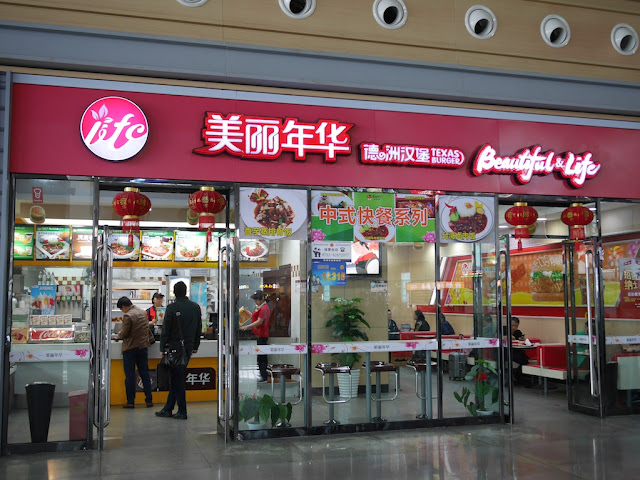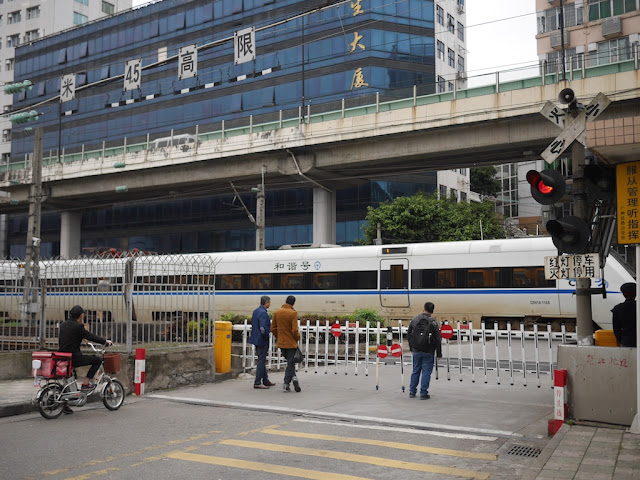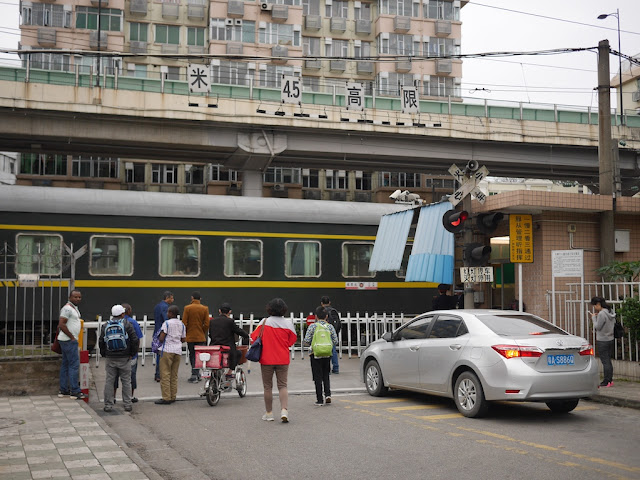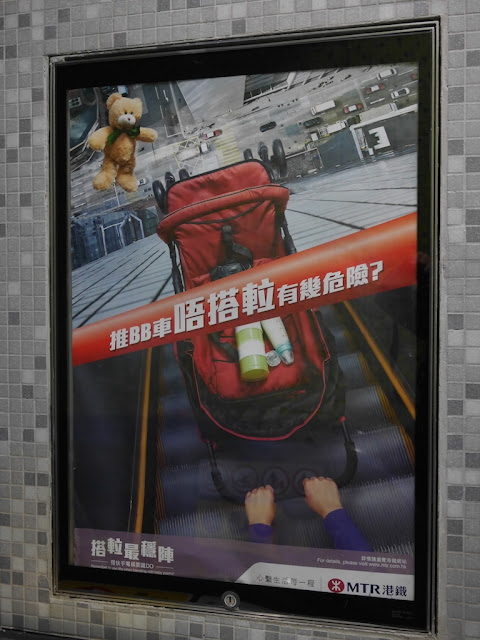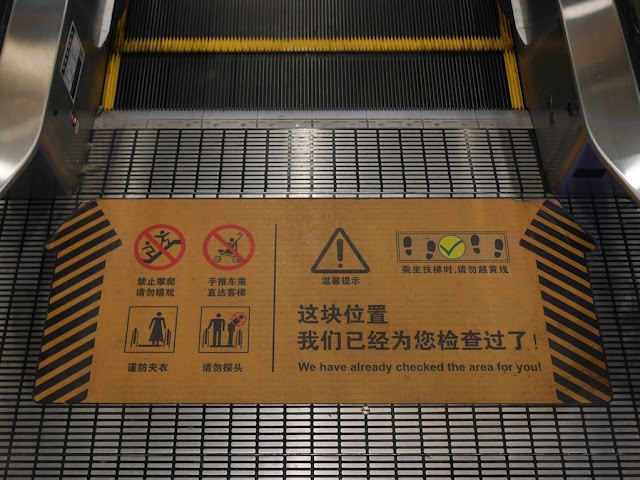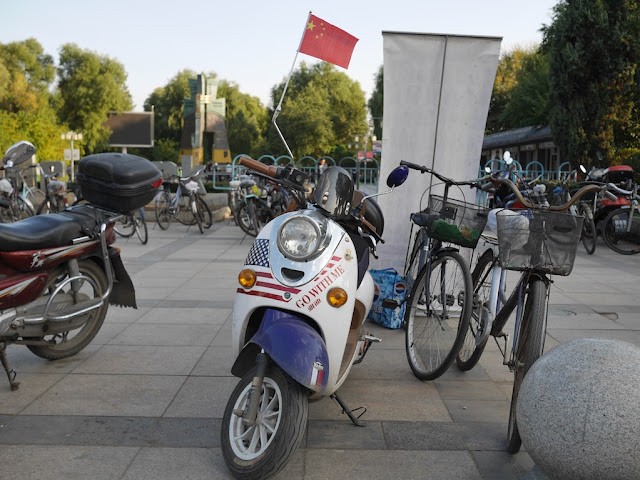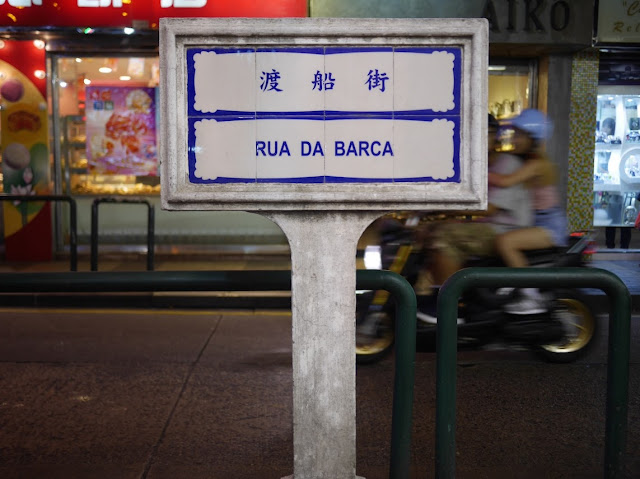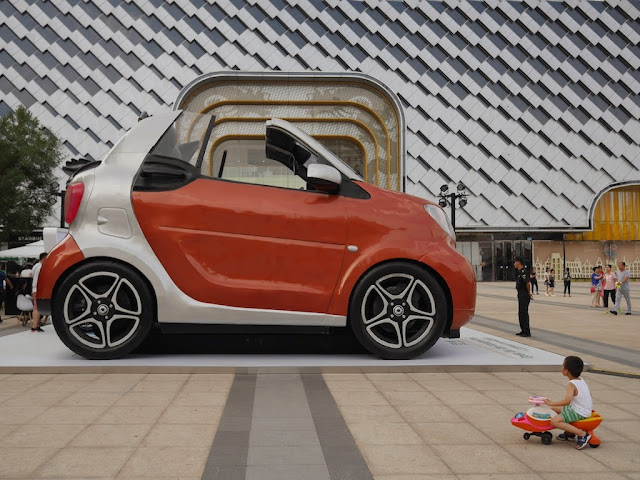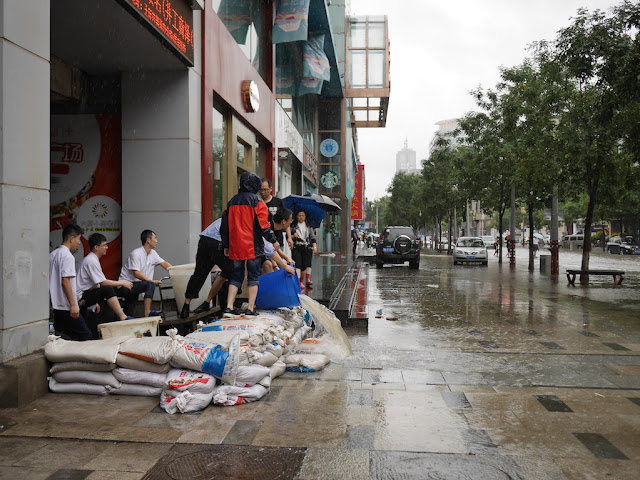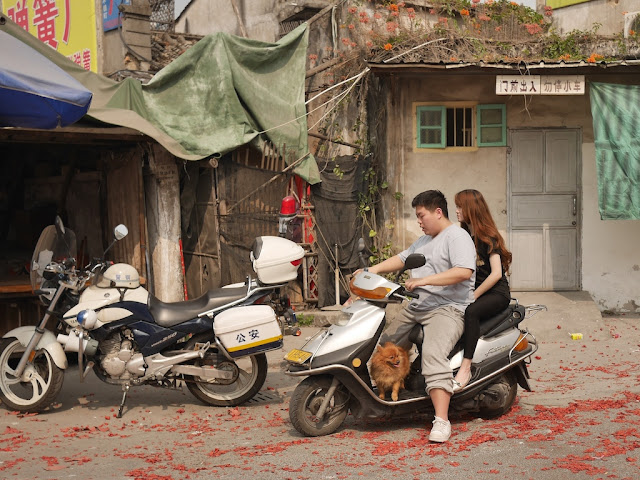Yesterday morning in Guilin I caught a taxi. It was rush hour, but at least I was headed out of the city center. Upon arrival at the Guilin North Railway station, I figured since it wasn't raining very hard I would get out of the taxi before opening my umbrella. I then found out the taxi had stopped at a place where a steady stream of water was pouring from a roof perfectly positioned for not covering a reasonable area where people might get out of a car.
My back was quickly drenched.
Life went on, and soon I was in the station. I didn't see a Texas Burger restaurant, but I had no need for one. I had recently eaten a small pack of unsalted roasted pumpkin seeds. Really, unsalted roasted pumpkin seeds are both good and filling.
Like my previous intercity trip, I boarded a high-speed train taking a route I had never traveled before. I expected many beautiful scenes. When some sunlight could penetrate to the tracks, even through clouds, some beautiful scenes did indeed appear. But these sunlit moments were fewer than I had expected. From the first stop in Rongjiang to my destination, I conservatively estimated at least 70% of the journey occurred while in tunnels. I have been on other rail lines with many tunnels, but this one was in a league of its own.
There are a lot of mountains in this part of China. And the high-speed rail line just goes straight through them. Fantastic for saving time. Not so great for views. Quite impressive though.
Upon arrival at my destination's North Railway Station, I quickly realized it was much larger than Guilin's. I also discovered that the taxi line is far past the still-under-construction subway station and past a long series of bus stops. But I still felt strength being drawn from the pumpkin seeds, so all was fine.
And soon I enjoyed a view from high up in the city.
No guessing games this time. If you can't identify the city from the photo (I suspect few can) or the title of this post (I suspect many can), I am now in Guiyang — the capital of Guizhou.
My first and only previous time in Guilin was nine years ago. My first time in Guiyang was eight years ago, and I last returned six years ago. In both cities a lot has changed, and that is part of the reason I haven't posted as much as I would have liked. There has been a lot to discover, sort out, and digest. Plenty of material for the future though . . .
And fear not, soon after my arrival in Guiyang I was enjoying an excellent sour and spicy dish. Pumpkin seeds have their limits.
My back was quickly drenched.
Life went on, and soon I was in the station. I didn't see a Texas Burger restaurant, but I had no need for one. I had recently eaten a small pack of unsalted roasted pumpkin seeds. Really, unsalted roasted pumpkin seeds are both good and filling.
Like my previous intercity trip, I boarded a high-speed train taking a route I had never traveled before. I expected many beautiful scenes. When some sunlight could penetrate to the tracks, even through clouds, some beautiful scenes did indeed appear. But these sunlit moments were fewer than I had expected. From the first stop in Rongjiang to my destination, I conservatively estimated at least 70% of the journey occurred while in tunnels. I have been on other rail lines with many tunnels, but this one was in a league of its own.
There are a lot of mountains in this part of China. And the high-speed rail line just goes straight through them. Fantastic for saving time. Not so great for views. Quite impressive though.
Upon arrival at my destination's North Railway Station, I quickly realized it was much larger than Guilin's. I also discovered that the taxi line is far past the still-under-construction subway station and past a long series of bus stops. But I still felt strength being drawn from the pumpkin seeds, so all was fine.
And soon I enjoyed a view from high up in the city.
No guessing games this time. If you can't identify the city from the photo (I suspect few can) or the title of this post (I suspect many can), I am now in Guiyang — the capital of Guizhou.
My first and only previous time in Guilin was nine years ago. My first time in Guiyang was eight years ago, and I last returned six years ago. In both cities a lot has changed, and that is part of the reason I haven't posted as much as I would have liked. There has been a lot to discover, sort out, and digest. Plenty of material for the future though . . .
And fear not, soon after my arrival in Guiyang I was enjoying an excellent sour and spicy dish. Pumpkin seeds have their limits.



